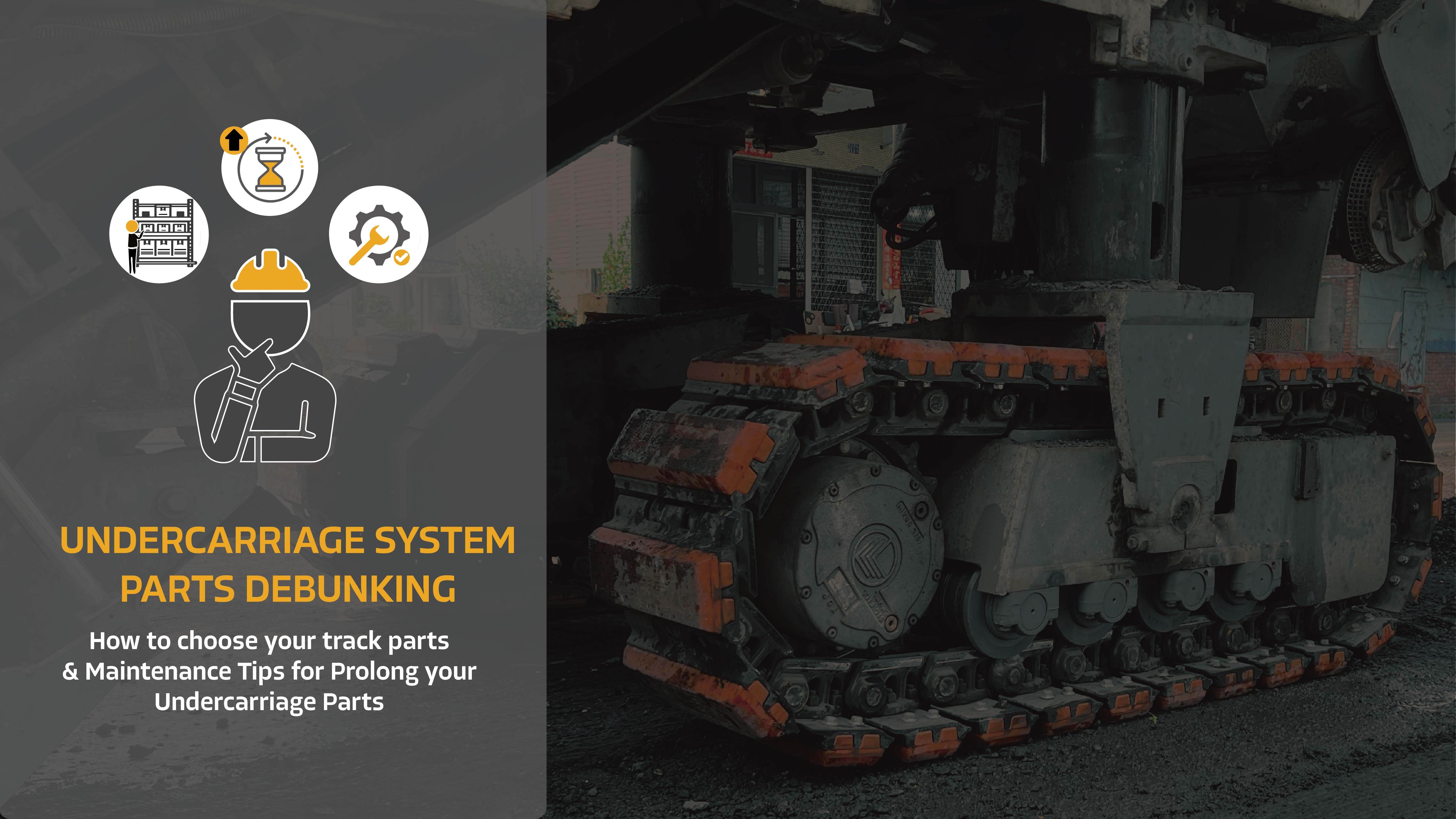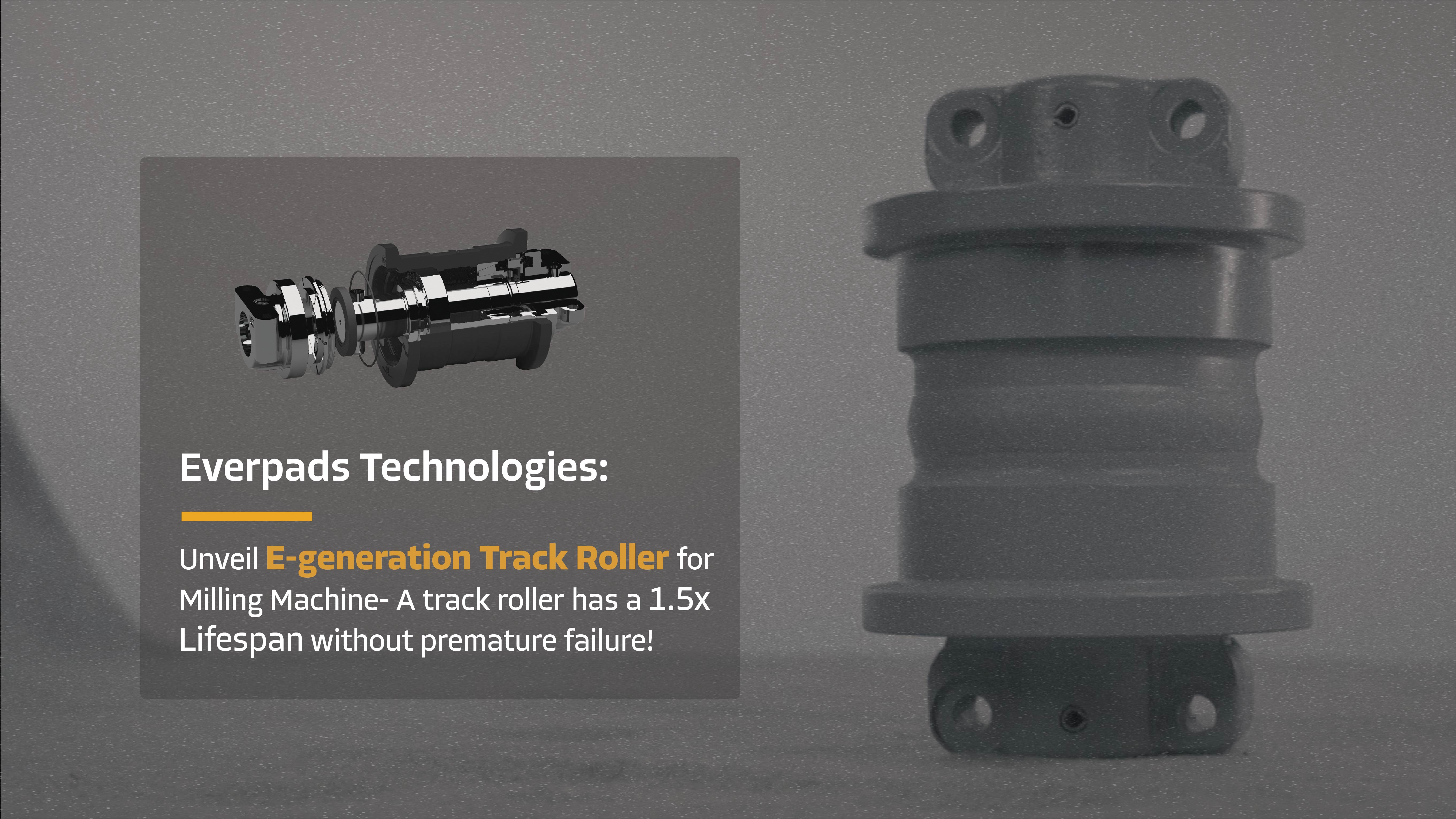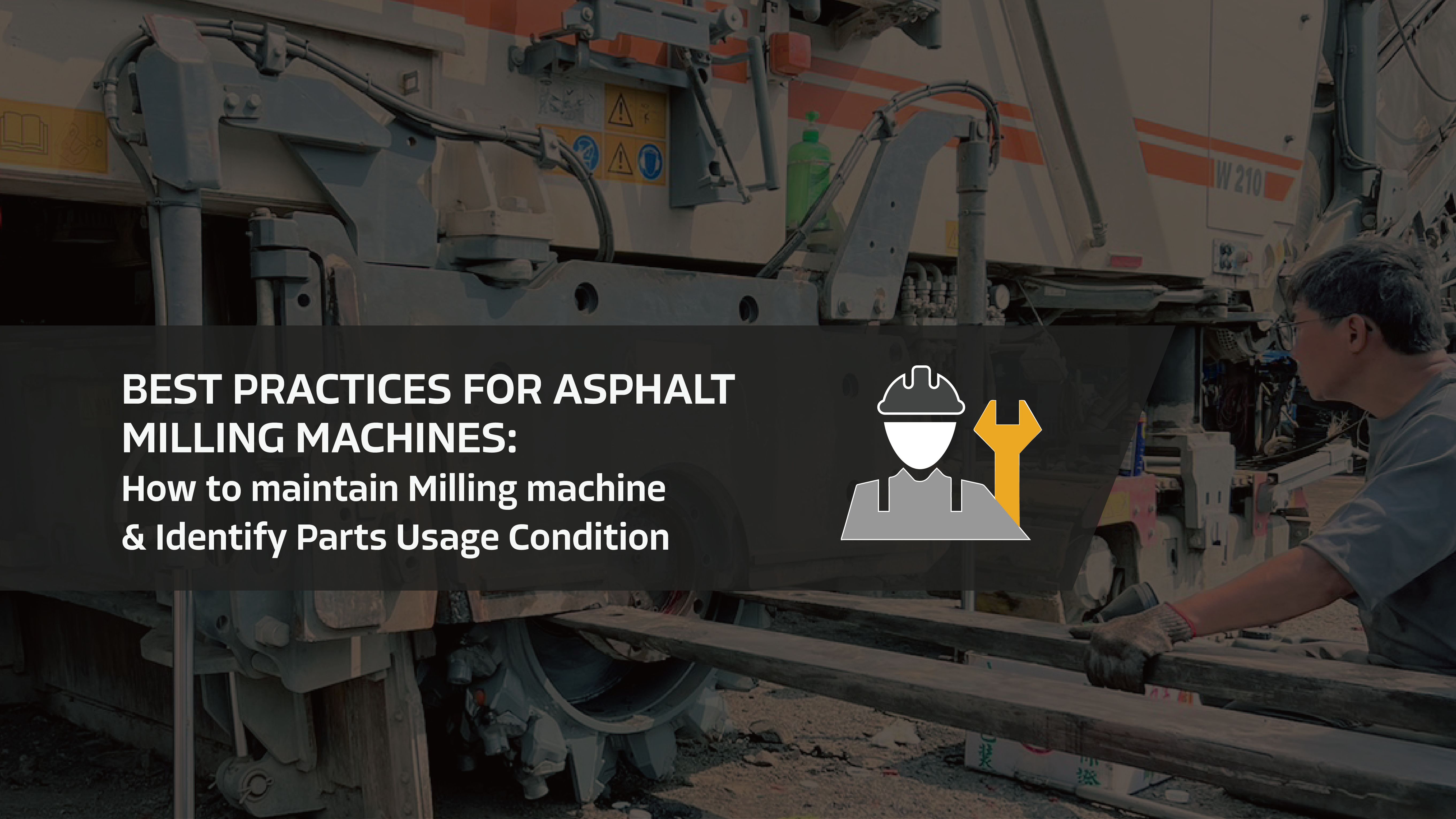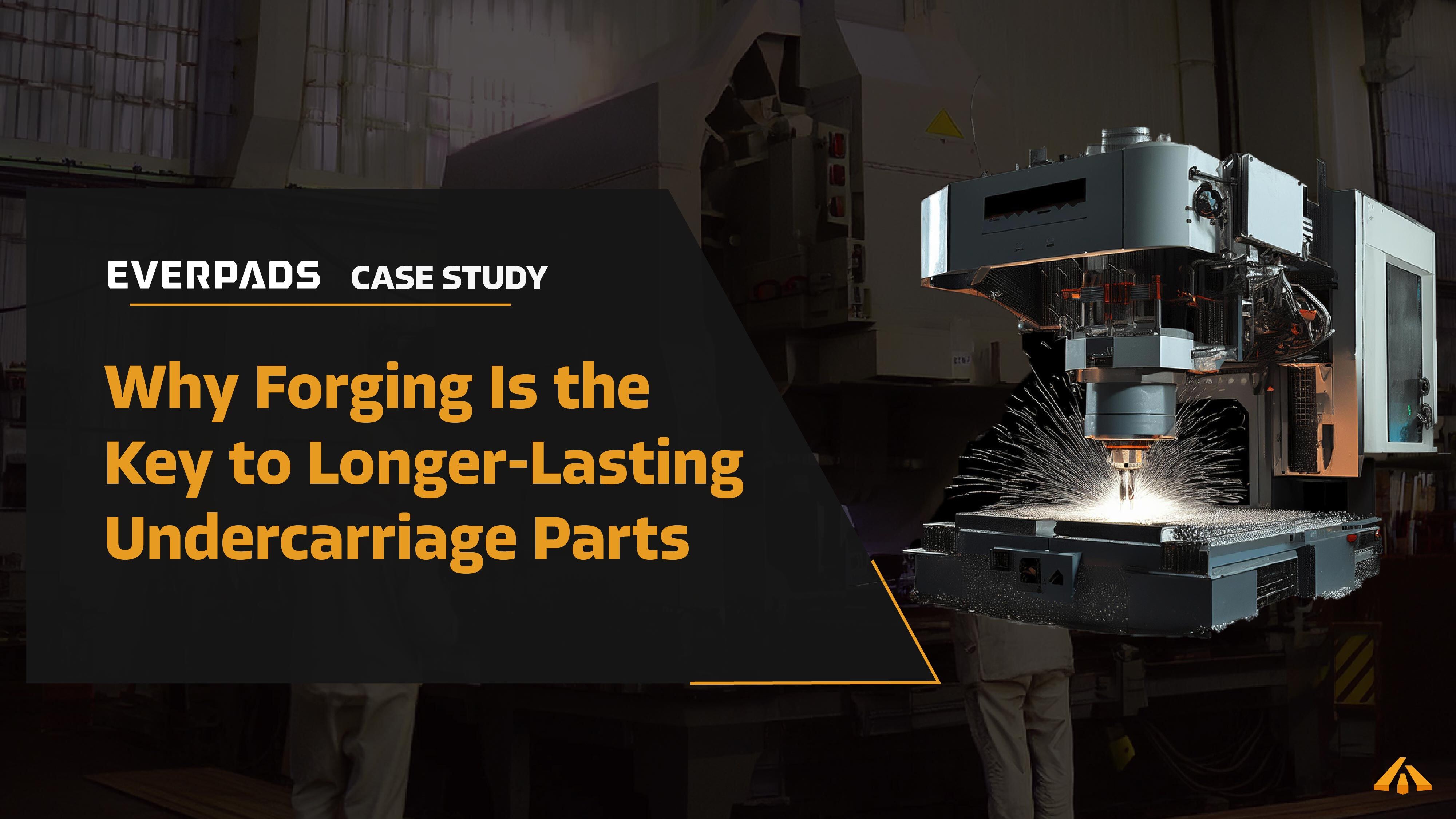In the asphalt industry, wisdom from experienced professionals often emphasizes the importance of grounding: "Be on earth, make sure your power comes from the ground." This guiding principle assists in overcoming numerous challenges. Today, we delve into the machinery's "feet"—the undercarriage system—to ensure your Cold Milling Machines and Pavers are as grounded as they should be. Following an overview of each undercarriage part's basic functions, we'll provide insights on maintaining, inspecting, selecting, and assessing them.
Stay informed with this article as we unveil the secrets of undercarriage spare parts, ensuring your machinery remains robust and reliable on the ground.
Ideal for contractors seeking to:
- Replace the current undercarriage parts with a better option.
- Understand assessment tips for an undercarriage part.
- Learn and apply maintenance techniques of undercarriage parts.
- Keep equipment in excellent condition to enhance safety and compliance.
Table of Contents:
1. Why Selecting an Undercarriage System Carefully is critical to your project?
2. Why Understanding each component within the undercarriage system is crucial
3. Overview of Undercarriage Parts and the Impact of Their Failure
4. General Tips for Choosing Undercarriage Components
5. Guidelines for Consideration for Undercarriage Components by Category
6. How to Regularly Examine Condition of the Undercarriage System?9. Summary
Why Selecting an Undercarriage System Carefully is critical to your project?
Firstly, the downtime for repairs is lengthy and costly, typically scheduled during the offseason to maximize machine efficiency. If unexpected failures of undercarriage parts occur during the peak season, it could lead to significant project delays and, understandably, a frustrated boss. Secondly, different machines necessitate specific undercarriage features; without careful assessment, your machinery might underperform or even breakdown, damages your project.
Why Understanding each component within the undercarriage system is crucial
Overview of Undercarriage Parts and the Impact of Their Failure
1. Track Pads
- Role: Track pads, also known as track shoes, are the parts that come into direct contact with the ground. They provide the vehicle with traction and distribute the vehicle's weight across the surface to prevent sinking into soft ground.
- Consequence of Incapacitation: Worn or damaged track pads can lead to decreased traction and increased wear on other components. It can also cause damage to sensitive surfaces on which the vehicle operates.
2. Track Chain
- Role: The track chain (or track belt) forms the backbone of the track system, wrapping around the sprockets and rollers. It's responsible for transferring the drive power from the sprocket to the ground through the track pads.
- Consequence of Incapacitation: A broken or overly stretched track chain can render the vehicle immobile, with repairs often being time-consuming and costly. It may also cause uneven wear on the sprockets and rollers.
3. Track Roller
- Role: Track rollers, including both top and bottom rollers, support the weight of the vehicle and guide the track chain as it moves around the undercarriage.
- Consequence of Incapacitation: Damaged or seized rollers can cause increased friction and wear on the tracks, potentially leading to track derailment or breakage.
4. Idler
- Role: The idler is a wheel at the front of the undercarriage that guides the track chain and helps maintain proper tension within the track system.
- Consequence of Incapacitation: A malfunctioning idler can lead to improper track tension, resulting in increased wear or track slippage off the sprockets, affecting vehicle mobility and stability.
5. Sprocket
- Role: The sprocket engages with the track chain to drive the track around the undercarriage. It's crucial for transferring the engine's power to the tracks.
- Consequence of Incapacitation: Worn or damaged sprockets can lead to inefficient power transfer, resulting in slippage or even the track coming off, which can severely limit or stop the vehicle's movement.
General Tips for Choosing Undercarriage Components
When selecting undercarriage components, many contractors prefer original equipment manufacturer (OEM) parts despite their higher cost. OEM parts are favored for their guaranteed compatibility and reliability. In contrast, high-quality aftermarket parts can potentially match or surpass the performance of OEM parts and often offer better value. However, these require thorough evaluation to ensure their suitability. Here are some tips to assist you in making an informed decision:
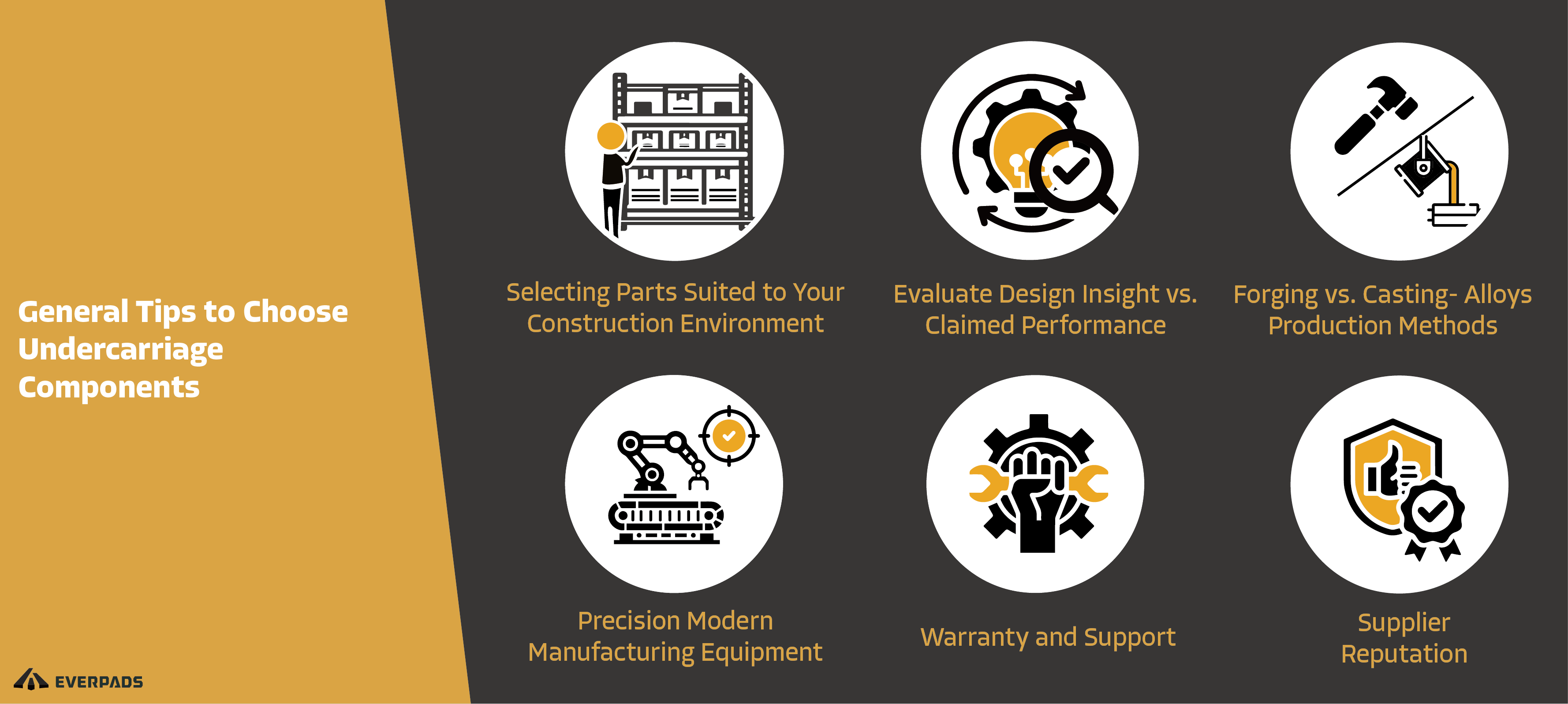
- Selecting Parts Suited to Your Construction Environment: When choosing components for your equipment, it’s crucial to consider the specific conditions of your construction environment. Factors such as terrain type, climate, and typical workload should guide your selection to ensure the parts are optimally matched to the demands they will face, enhancing both performance and durability.
- Evaluate Design Insight vs. Claimed Performance: Check if the design insights of the product align with and support the performance claims made by the manufacturer.
- Forging vs. Casting- Alloys Production Methods: After verifying similar design insights, it's essential to examine the manufacturers' production methods. For undercarriage systems, forging typically offers superior shape precision, material hardness, and density compared to casting, resulting in a longer lifespan for the components.
- Precision Modern Manufacturing Equipment: The precision of multi-axis lathes and the role of heat treatment in achieving proper steel density and hardness are crucial for ensuring high quality and durability in components. Accurate manufacturing processes ensure perfect fit between parts, and insufficient fit can lead to unstable performance.
- Warranty and Support: Check the warranty and support options available for the parts. A good warranty can save significant money and hassle if a part fails prematurely.
- Supplier Reputation: Purchase from reputable suppliers known for quality parts and good customer service. Research reviews and ask for recommendations from other industry professionals.
Guidelines for Consideration for Undercarriage Components by Category
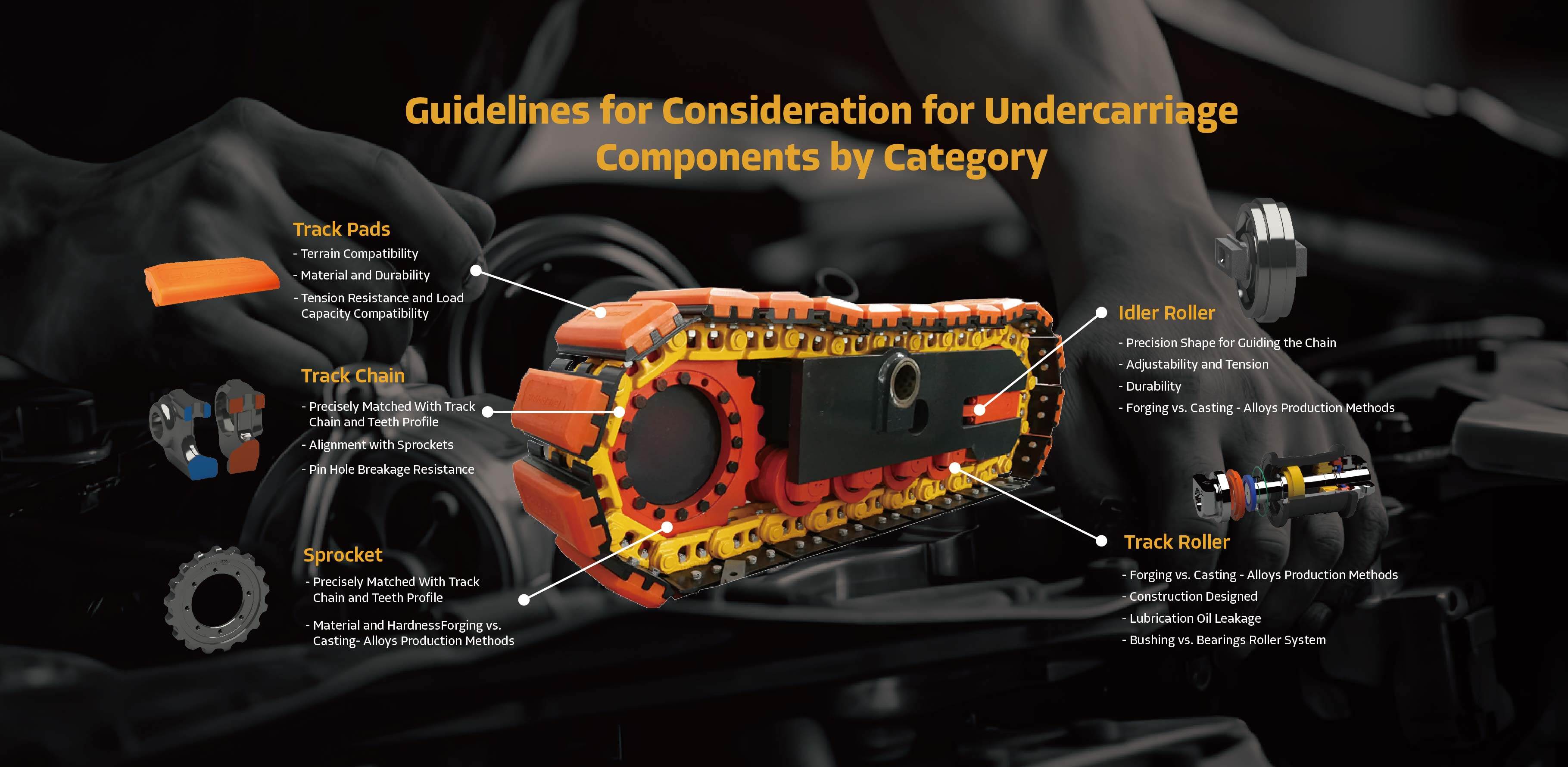
Choosing the right undercarriage parts for your machinery involves considering several factors to ensure durability, performance, and cost-efficiency. Here are some tips for selecting each of the parts you mentioned:
1. Track Pads
- Terrain Compatibility: Choose track pads based on the most common terrain your machinery will operate on. Wider pads are better for soft ground to distribute weight more evenly, while narrower pads work well on hard surfaces.
- Material and Durability: Consider the material (rubber, polyurethane, steel) based on your operational needs. For example, rubber pads are quieter and cause less damage to paved surfaces, making them ideal for urban or residential areas.
- Tension Resistance and Load Capacity Compatibility: Choose track pads that meet the specific needs of your machinery. Ensure they can handle the operational tension and load without deforming. High tension resistance maintains pad integrity and attachment, while sufficient load capacity supports the machine's weight effectively.
2. Track Chain
- Forging vs. Casting - Effects of Alloy Production Methods on Track Chain Performance: Forging typically offers superior shape precision, material hardness, and density compared to casting in the production of track chains. This results in better alignment in chain connections, enhanced tension retention, and increased durability of the chain
- Alignment with Sprockets: Proper alignment between the chain and sprockets is essential for efficient operation. Correct alignment helps minimize wear and tear on both the sprockets and the chain, reducing the likelihood of increased friction, noise, and premature failure.
- Pin Hole Breakage Resistance: A frequent cause of premature failure in chains is the breakage of pin holes. Ensuring robust pin hole design and material integrity is vital to prevent such failures and enhance the durability of the chain.
3. Track Roller
- Forging vs. Casting - Effects of Alloy Production Methods on Track Roller Performance: It's crucial to check the production methods used by manufacturers once design insights are aligned. Forging typically delivers better shape precision, material hardness, and density than casting, enhancing the longevity of undercarriage components.
- Construction Designed: Opt for a heavy-duty sealed system in track rollers to ensure they withstand operational pressures and environmental contaminants. This design helps to prolong the life of the rollers under rigorous conditions.
- Lubrication Oil Leakage: Oil leakage is a common issue leading to the failure of track rollers. Select a supplier that invests in research and development to address and minimize this problem.
- Bushing vs. Bearings Roller System: Roller bearings facilitate free rotation, minimizing friction and energy consumption, making them ideal for high-speed applications. Conversely, bushings are less mobile, leading to increased friction and higher energy use, making them better suited for simpler, low-speed environments.
4. Idler
- Forging vs. Casting - Effects of Alloy Production Methods on Idler Performance: Consider the manufacturing process when selecting idlers. Forged idler provide in a longer lifespan for the components and guide track chain more precisely under various conditions.
- Precision Shape for Guiding the Chain: A precisely shaped idler provides an accurate guide to the chain, enhancing overall system alignment and efficiency.
- Adjustability and Tension: Select idlers that offer easy tension adjustments. Maintaining proper track tension is crucial for extending track life and improving machine efficiency.
- Structure Design: Choose idlers that are equipped with high-quality bearings and seal system. These components are essential to prevent failures caused by dirt, debris, and water ingress, thereby enhancing the idler's longevity and reliability.
5. Sprocket
- Forging vs. Casting- Effects of Alloy Production Methods on Track Chain Performance: For the production of sprockets, forging is preferred over casting. Forged sprockets offer superior shape precision, material hardness, and density. These characteristics are vital for enhancing traction performance with the chain and overall durability, making forging the superior method for sprocket manufacturing.
- Precisely Matched With Track Chain and Teeth Profile: The sprocket should be compatible with the track chain's pitch and link design. A correct teeth profile ensures smooth engagement with the track, reducing wear on both the sprocket and the chain.
- Material and Hardness: Opt for sprockets made from hardened steel or other durable materials to resist wear and extend the component's life.
How to Regularly Examine Condition of the Undercarriage System ?
Visible Signs of Damage
- Bent or Cracked Components: These can compromise the structural integrity of the undercarriage, leading to potential failures under stress. Immediate repairs or replacements are necessary to prevent accidents.
- Missing or Loose Bolts: This condition can lead to instability and increased wear on other components. Regular checks should be performed to tighten or replace missing bolts.
- Excessive Wear on Tracks and Pads: Significantly worn tracks and pads reduce the equipment's efficiency and can cause damage to other undercarriage parts. Replacing worn tracks and pads is essential for maintaining optimal performance.
Performance Issues Indicating Wear

- Increased Noise: This often indicates that components are worn and may be rubbing or impacting each other incorrectly. Investigating and addressing the cause of noise can prevent further damage.
- Vibrations: Excessive vibrations can lead to operator discomfort and additional stress on machine components. Identifying and fixing the source of vibrations is crucial for safe and comfortable operation.
- Decreased Traction: Worn tracks or pads can lead to reduced traction, affecting the machine's performance and safety. Replacing these components restores traction and operational efficiency.
- Difficulty in Maneuvering: Challenges in steering or maintaining a straight path can indicate issues with the undercarriage alignment or wear on specific components. Addressing these issues is key to ensuring accurate and efficient equipment operation.
Importance of Rapid Repair Undercarriage Wear and Tear
- Prevents Further Damage: Early detection and repair of undercarriage wear can prevent cascading failures of other components, saving time and money on more extensive repairs.
- Ensures Operational Efficiency: Maintaining the undercarriage in good condition ensures that the machinery operates as efficiently as possible, reducing fuel consumption and wear on other parts.
- Improves Safety: Addressing undercarriage issues promptly can significantly improve the safety of the equipment, reducing the risk of accidents due to component failure.
- Extends Machinery Lifespan: Regular maintenance and timely replacement of worn undercarriage parts can extend the overall lifespan of the machinery, ensuring it remains a valuable asset for longer.
Regular Maintenance Tips for Prolonging Undercarriage Parts Service Life
Cleaning and Lubrication
- Routine Cleaning: Make it a habit to clean the undercarriage thoroughly after each use, especially when operating in muddy or gritty environments. A build-up of debris can increase wear by causing additional friction and can even lead to rusting and corrosion.
- Consistent Lubrication: Regularly lubricate all moving components to ensure they operate smoothly. Use lubricants recommended by the manufacturer to protect against wear and extend the lifespan of the undercarriage parts.
Regular Component Checks
- Visual Inspections: Frequently inspect the undercarriage for any signs of wear, damage, or loose parts. Early detection of issues like cracked tracks, worn rollers, or damaged sprockets can prevent more severe problems.
- Track Tension: Ensure the track's tension is adjusted according to the manufacturer's guidelines. Over-tensioned tracks can increase wear on rollers and sprockets, while under-tensioned tracks can lead to slippage or derailment.
- Alignment and Balance: Check the alignment of the undercarriage components regularly. Misalignment can cause uneven wear and reduce operational efficiency.
Proper Equipment Operation
- Operator Training: Ensure that operators are trained in the best practices for equipment use. Proper operation can significantly reduce undercarriage wear and tear.
- Avoid Unnecessary Strain: Teach operators to avoid making sharp turns, operating at high speeds on hard surfaces, and excessive spinning, as these actions can accelerate undercarriage wear.
- Use Appropriate Equipment: Match the equipment and undercarriage type with the job at hand. Using equipment designed for the specific terrain and operating conditions can reduce wear.
Summary
A well-maintained undercarriage system is crucial for the performance and longevity of heavy machinery. Key components like track pads, chains, rollers, idlers, carrier rollers, and sprockets work together to ensure stability and efficiency. Regular maintenance, including cleaning, lubrication, and inspections, along with proper operation, can prevent premature wear and costly repairs.
Assessing and choosing the right undercarriage parts tailored to specific machinery needs is essential. Proactive care and addressing signs of wear early extend the undercarriage's life, ensuring machinery reliability and productivity.
.png?width=698&height=417&name=%E5%AE%98%E7%B6%B2logo%20(1).png)
